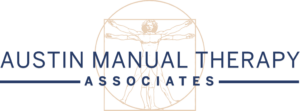Physical therapy (PT) plays a crucial role in the lives of athletes, acting as a cornerstone for both performance enhancement and injury prevention. Whether you’re a professional athlete or enjoy physical activity recreationally, maintaining optimal physical conditions is paramount. This is where physical therapy for athletes near me becomes invaluable. From improving mobility issues to accelerating the healing process after injuries, physical therapy offers athletes a wide range of benefits that help them stay in top form and push their performance to new heights. At Austin Manual Therapy Associates, our focus is on providing a personalized strengthening and mobility program that caters specifically to the needs of athletes, ensuring they perform at their best and stay athlete-ready.
Improved Mobility
Mobility is fundamental for any athlete, regardless of the sport. Proper body mechanics allow athletes to handle basic movements critical to their performance. Physical therapy for professional athletes is designed to improve joint mobilization, enhance range of motion, and ensure that muscles and tendons work harmoniously. Through targeted active exercises, manual therapy, and stretching techniques, physical therapists help athletes increase their mobility, making it easier to perform complex movements efficiently. This enhances physical performance and significantly reduces the risk of injury due to limited mobility or stiffness.
Muscle Rehabilitation
Injuries are unavoidable in an athlete’s journey, making muscle rehabilitation a key reason many athletes turn to physical therapy. Most (62.9%) athletes report that physical therapy primarily focuses on therapy for sports injuries and returning to their sport. Muscles can weaken or lose vital flexibility when injuries occur, hindering performance. Physical therapists collaborate with athletes to help rehabilitate these affected muscles, restoring muscle strength, flexibility, and endurance. They employ various techniques, including hands-on care such as soft tissue mobilization, targeted therapeutic exercises, and modalities like ice therapy and electrical stimulation to facilitate tissue healing and enhance muscle function. This comprehensive injury rehabilitation process ensures athletes return to their sport with increased strength and resilience.
Muscle Balance

Muscle imbalances are common among athletes and can be a precursor to sports injuries. Addressing these imbalances through physical therapy highlights the benefits of physical therapy for athletes by creating a more balanced and functional musculoskeletal system. These imbalances occur when certain muscles are stronger or more developed than others, often due to repetitive movements specific to a particular sport. For example, a tennis player might have more developed muscles on one side of their body. Physical therapy addresses these imbalances by focusing on strengthening weaker muscles and stretching tighter ones, thereby creating a more balanced and functional musculoskeletal system. This balance improves overall athletic performance and minimizes the risk of overuse injuries by ensuring that no body part overcompensates for weaknesses elsewhere.
Neuromuscular Coordination
Athletic performance is not just about raw strength or speed; it also depends on neuromuscular coordination, which is the ability of the nervous system to communicate effectively with muscles. Physical therapy enhances this coordination by incorporating exercises that train the body and brain to work together more efficiently. For instance, balance exercises, agility drills, and proprioceptive training help athletes improve their reaction times, speed, and efficiency. Better neuromuscular control allows athletes to perform complex tasks more fluidly and with greater precision, giving them a competitive edge.
Get Rid of Pain
Pain management is another critical aspect of physical therapy for athletes. Chronic conditions or discomfort can significantly hinder an athlete’s ability to train and perform. Physical therapists are skilled in identifying the underlying causes of pain and using various techniques to alleviate it. This might include manual therapy to relieve tension, corrective exercises to address posture or movement issues, and modalities like ice therapy or heat therapy to reduce inflammation. By addressing the root cause of the pain rather than just the symptoms, physical therapy helps athletes get back to their sport without discomfort.
Increased Strength
Muscle strength is the foundation of athletic performance. Strong muscles are essential whether you’re sprinting, lifting, or jumping. Physical therapy helps athletes build strength in a controlled and balanced way. Unlike general strength training, which can sometimes lead to imbalances or overtraining, physical therapy programs are designed to meet the athlete’s specific needs. Therapists focus on strengthening the major muscle groups and stabilizing muscles that support joints and prevent injury. This comprehensive approach to strength training exercises helps athletes achieve optimal power and endurance without compromising their health.
Better Speed and Performance
Speed and performance are often the primary goals for athletes, and physical therapy can help in both areas. Through strength training, mobility exercises, and neuromuscular coordination drills, physical therapy helps athletes enhance their speed and overall performance. Plyometric training, and sports-specific training are incorporated into PT programs to ensure athletes perform faster and more efficiently. Additionally, by preventing potential injuries and optimizing recovery, physical therapy allows athletes to train harder and more consistently, leading to long-term performance improvements.
Physical Therapy Vs. Sports Physical Therapy
While general physical therapy focuses on restoring function and relieving pain, sports medicine physical therapy is specifically tailored to the needs of athletes. Sports physical therapists are trained to understand the unique demands that different sports place on the body, and they design treatment plans that address these specific challenges. Whether rehabilitating a torn ACL or enhancing the explosive power needed for basketball, sports physical therapy goes beyond traditional PT by incorporating sport-specific training and conditioning. This specialization ensures that athletes recover from injuries and return to their sport with improved performance and reduced risk of re-injury.
When to Consult a Professional

Recognizing when to consult a physical therapist is crucial for athletes striving to optimize their performance. Instead of merely considering physical therapy as a solution for injuries, it should be approached as a proactive preventive measure. A March 2024 survey of over 1,000 Americans revealed that 51% had received care from a physical therapist at some point. Regular evaluations with a sports physical therapist can help identify potential issues before they become major concerns. Athletes should consider scheduling a consultation if they experience ongoing pain that does not improve with rest, notice a drop in performance, suffer from recurring injuries or frequent soreness, need rehabilitation post-surgery, or seek to enhance their athletic performance. Recreational athletes, youth athletes, and elite sports therapists can all benefit from this approach.
Addressing concerns early by consulting a physical therapist can help thwart the progression of minor issues into substantial setbacks. By doing so, athletes can minimize downtime and remain competitive in their respective sports. A proactive approach ensures that athletes recover effectively and continue to enhance their performance, ultimately keeping them at the pinnacle of their athletic endeavors.
At Austin Manual Therapy Associates, we understand the unique needs of athletes and are dedicated to helping you reach your full potential through individualized training programs. Whether recovering from an athletic injury or looking to enhance your performance, our team is here to support you every step of the way.
Conclusion
Physical therapy is an indispensable tool for athletes. Its benefits range from improved mobility and strength to enhanced performance and pain relief. At Austin Manual Therapy Associates, we specialize in sports-specific physical therapy, providing athletes with the care and guidance they need to excel in their sport while minimizing the risk of injury. Whether you’re dealing with an injury or looking to take your performance to the next level, our team is here to help you achieve your goals.
FAQs
Is physical therapy good for athletes?
Yes, physical therapy is highly beneficial for athletes. It helps improve mobility, strength, and neuromuscular control while preventing injuries and aiding recovery from sports-related injuries.
How can physical therapy help me prevent sports-related injuries?
Physical therapy prevents sports-related injuries by addressing muscle imbalances, improving flexibility, and enhancing neuromuscular control. Regular PT sessions help identify and correct potential issues before they lead to injury.
How long does it take to see results from sports physical therapy?
The time it takes to see results from sports physical therapy varies depending on the injury’s severity and the athlete’s dedication to their rehabilitation program. However, many athletes begin to notice improvements in mobility, strength, and pain reduction within a few weeks of consistent therapy.





